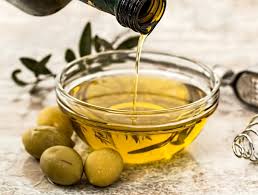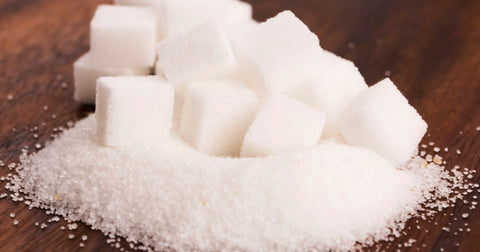Whether you are making a sponge, chocolate, or layer cake, basic ingredients are pretty much always the same. Besides chocolate, almonds, canned and glazed fruit used in numerous recipes, the main ingredients for baking almost every type of cake are flour, sugar, eggs, fat, and leavening. These are must-have baking ingredients, and the baking cake itself is impossible without them.
Flour

Why Is Flour One of the Main Ingredients in Baking a Cake?
In the process of baking a cake flour is the same as the foundation when building a house. Nothing goes without it. It is the ingredient that gives structure to the cake. Although there are flour-free cakes, like cheesecake, most of the others contain it. That is why flour is a must-have baking ingredient.
Which Flour Should Be Used When Baking a Cake?
Cake flour is the ground flour used in many recipes. It is milled from soft, low-protein wheat and it has a fine, silky texture. Cake flour has 5-8% lower protein content compared to all-purpose flour which contains 10-11%.
Why Is the Amount of Protein in Flour Important in Baking?
The protein found in wheat is generally known as gluten. Gluten acts as a binder, holding the basic ingredients together, and it gives structure to cakes. When the flour contains less gluten, the dough texture is lighter, which makes the texture of the cake lighter too.
Is There a Substitute for Cake Flour?
Mixing all-purpose flour with cornstarch can serve as a substitute for cake flour. Remove two tablespoons from one cup of all-purpose flour, and replace those two tablespoons of flour with the same amount of cornstarch. Stir this mixture a couple of times and voila! Cake materials should not be changed since this affects the baking, but this mixture serves as well as the cake flour.
Fat and Oils

What Is the Role of Fat and Oils in the Baking Process?
Fat plays an important role in moving the heat through the cake when baking. This means that with the help of fat and oils, the cake gets baked evenly. Fats also enable the browning of batter. Even though they contain very little or no moisture, fat and oils provide the feeling of it when combined with other basic ingredients. They give the dough a sense of moisture and prevent it from crumbling. The most important is that fats and oils weaken the gluten bands within the dough structure which results in the cake being lighter and softer.
Which Fat and Oils Are Used in Baking a Cake?
Butter, various oils, lard, and shortenings are most commonly used in baking. All of these are cake materials, but butter is mostly used for its taste and the texture it gives to cakes.
Why Are Fats and Oils Part of the Cake Basics?
Different parts of cake require different making methods. One of them is better known as the creaming method. In this type of method, fat is beaten with sugar. Because of its crystals, sugar creates air bubbles in the butter. Affected by the heat from the oven, those bubbles allow the leavening agents like baking powder or baking soda to expand them. This process results in making the dough volume increase and baking goods rise. The fats and oils, combined with sugar, play the role of leavener when the batter is made by using the creaming method.
Sugar

Sugar is one of the main ingredients in baking a cake because it gives baked goods a sweet taste. However, sweet flavor is not the only thing sugar is responsible for. There are a couple of reasons why it is a must-have baking ingredient.
Why Is Sugar One of the Most Important Baking Materials?
As mentioned, when beaten with butter, crystals in the sugar create air bubbles. Later on, those air bubbles serve as a leavener that makes the batter grow. This is not the only reason why sugar is crucial in baking.
Liquid ingredients joined with sugar create a glue-like mixture. This mixture affects the structure of the cake by locking the moisture and making the batter softer and tenderer. Because it holds the wetness in the batter, sugar modifies the proteins and starches in the dough making the structure of the cake fluffier.
Sugar is also the reason why baked goods get that brownish color. The color is the result of sugar reacting with proteins when being exposed to heat.
Eggs

Both egg yolks and egg whites, or albumin, are used for baking cake. The role of these two is completely different but equally important.
Why Do We Use Egg Yolks in Baking a Cake?
Egg yolk is packed with vitamins, nutrients, and fats. Fat affects the role of gluten in the batter, resisting the structure density by making it lighter. Egg yolk also has great emulsifying abilities. It binds fats and liquid together, which helps create a more homogenous mixture of ingredients. Acting like glue, it creates the batter that doesn’t fall apart.
When heated, egg yolks unfold and create a gel of the proteins they contain. By gelling proteins together they help the structure thickens. It also makes the flavor more luscious and gives it color.
Egg whites are almost entirely made of water and proteins. Whipped whites act as a natural leavener. When beaten, egg whites create foam full of air bubbles that later react to heat, making the batter rise. Egg whites can also be combined with sugar and have the same role.
Eggs create stability within a batter, giving it structural support. On the other hand, they also help in making the lighter texture. Eggs add moisture to the cakes since they are 75% liquid. Eggs can also act like glue or even a glaze since they are used for making all parts of the cake.
Leaveners and Liquids
Leavening agents are yeast, baking soda, and baking powder. When combined with other ingredients and exposed to heat, they affect the batter to grow, thus making the cake structure lighter.
Different liquids react differently to other ingredients. Most commonly used are milk and water, but some cake recipes require other liquids like fruit juices. The more liquid you add to your batter, the more moist cake will have. Another role of liquids is that they help in creating the structure of dough by hydrating the proteins in the batter. This reacts in a chemical change crucial for structure development.

